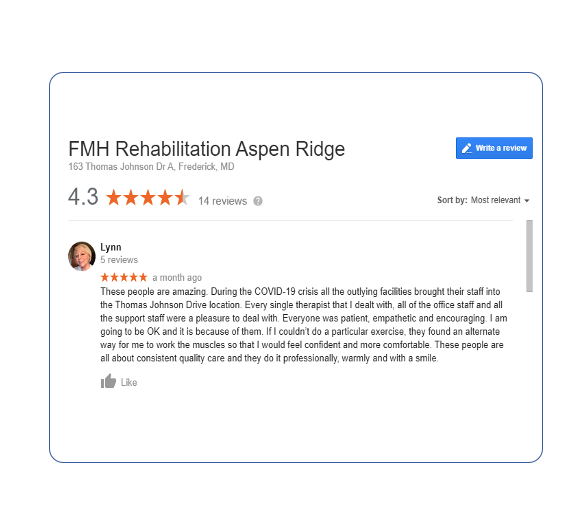Is It Safe to Go to Rehab?
Many people are wondering…is it safe to go to a therapy clinic? During the pandemic, many people have adjusted their lives; working from home, less social activities, and simply staying sedentary on the couch.
All of these lifestyle changes can result in an increase of mild and chronic pains as well as a decrease in functional abilities. This is where physical therapy, occupational therapy, and speech-language pathology can step in and help.
Delaying procedures, reducing spending on preventive care and chronic care could and oftentimes causes negative long-term impacts on a person’s health. A survey by the Alliance of Community Health Plans (ACHP) found…
- 72% said that the pandemic has in some way impacted their health care.
- 41% have delayed care during the pandemic.
- 53% of seniors have delayed care.
- 60% with chronic conditions have delayed care.
- 38% will continue to delay care in the near future.

Physical, occupational, and speech therapists are considered essential workers and have played an important role throughout the pandemic. Therapists’ treatment plans are individualized and specifically address function to improve a patient’s quality of life while also treating pain and preventing future problems.
There are many conditions that physical, occupational, and speech therapists can treat to help patients avoid hospital visits. Therapists have been identified as professionals who can effectively deliver interventions to not only help patients with chronic pains which have been mounting up over the past months but they can also help those suffering from anxiety and depression, which has become more prevalent during COVID-19.
Fortunately, we don’t have to change our clinic practices during this time because we have always operated in a one-on-one capacity with our patients. Tx:Team is also ultra-focused on the safety of our patients and our clinics by social distancing from other patients and following all recommended CDC guidelines. Our clinics are working extremely hard to ensure cleanliness for each patient through proper sanitation; all equipment and areas are sanitized after each patient’s treatment. Our therapists are also well-trained on the use of PPE and hand hygiene.
Our treatment philosophies remain the same – you will continue to get the same great service individualized for you in a one on one atmosphere that we have been delivering since 1983. Don’t ignore or delay possible care for a condition that physical, occupational, or speech therapy can help. Come back to rehab confident that your safety and care is our top priority.
